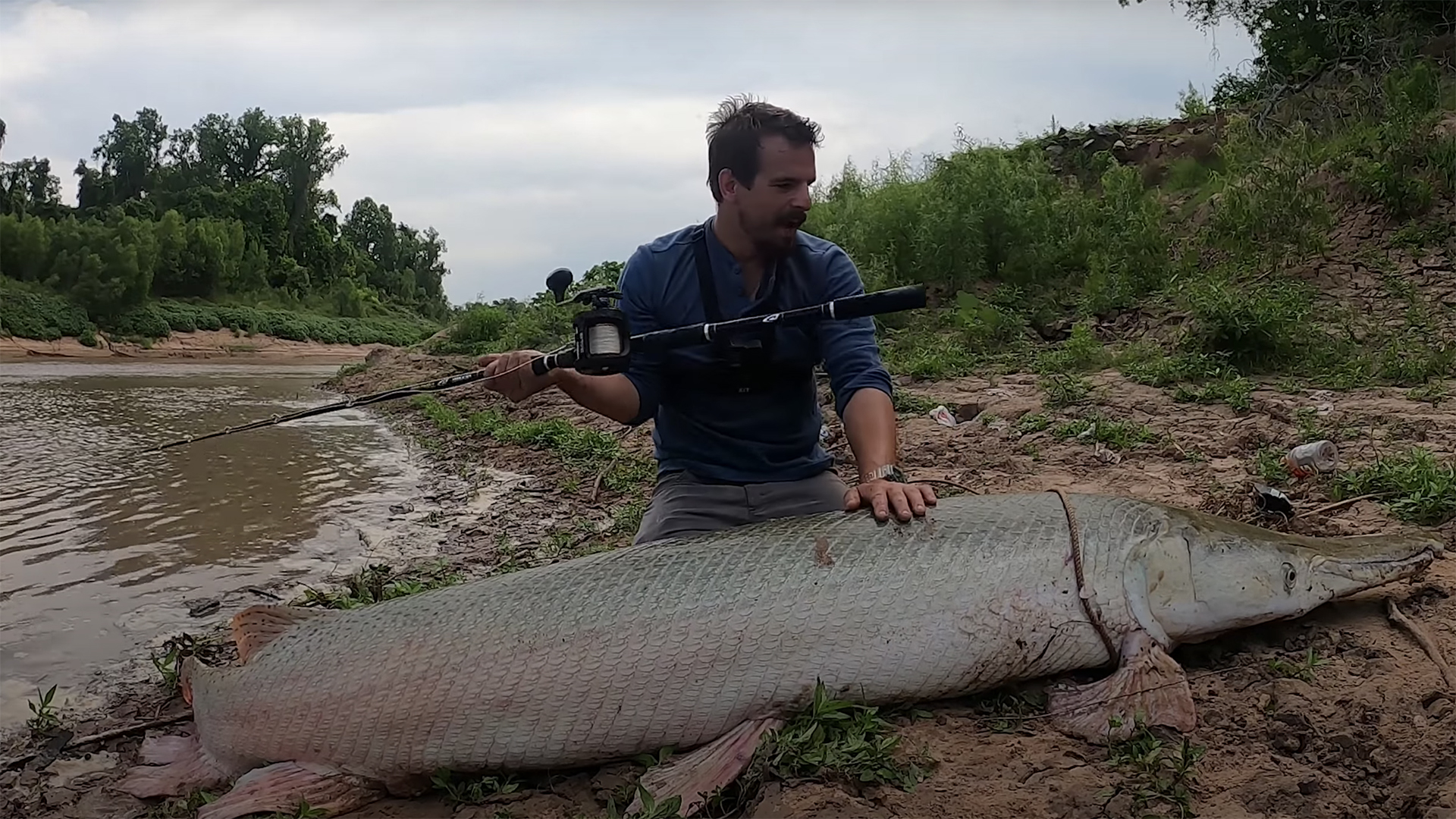Colossal 300-pound alligator gar caught (and released) in Texas bayou
The catch was "an excellent specimen."

Most people think of fishing as a relaxing way to pass an afternoon. But for YouTuber and conservationist Payton Moore, a recent fishing excursion was instead an intrepid monster hunt.
Last week, the Texan set sail down a Houston bayou in search of a truly gargantuan alligator gar (Atractosteus spatula) stretching over 8 feet (2.5 meters) long and tipping the scales at an estimated 300 pounds (136 kilograms). He found what he was looking for —and he even managed to catch the gigantic fish. "It felt like somebody's car had just started up and was rolling out of the driveway, and I’m hanging on to the end of it," Moore told the Houston Chronicle in an interview.
After hauling the fish ashore and measuring it, he released the gar back into the wild. Then he uploaded a video of the catch to his channel, WILD LIFE on May 7.
Related: Amazon 'river monster' turns up dead in Florida
"This was an excellent specimen," Nate Smith, a research biologist at the Texas Parks and Wildlife Department who researches alligator gar, told Live Science. "It’s hard to say what the exact weight was without more precise measurements or an official scale, but it's obviously a big fish."
Officially, the largest alligator gar ever caught in Texas weighed in at 302 pounds (137 kg), according to Texas Parks and Wildlife. It was captured in 1953 on a trotline — a heavy line with shorter baited lines attached along its length at regular intervals. Moore's catch may have outweighed the previous champ, but since he did not seek official certification, his fish isn't record-eligible.
Gars belong to an ancient lineage of fish that were once widespread across the globe. Fossil remains of extinct gar dating back to the Cretaceous period (145 million to 66 million years ago) have been unearthed in Europe, Africa and south Asia, according to the Florida Museum. Only seven species are still around today.
Sign up for the Live Science daily newsletter now
Get the world’s most fascinating discoveries delivered straight to your inbox.
Alligator gar, the largest of the extant gar species, are among the biggest freshwater fish in North America, according to National Geographic. They live exclusively in the lower Mississippi River Valley, where they chow down on smaller fish, blue crabs, waterfowl and the occasional turtle. While a fully-grown alligator gar may look intimidating, they pose no threat to humans. However, like other gar, their eggs are toxic to people and should not be eaten.
Historically, gar have been targeted by culling efforts by various state and federal agencies to make more room for game fish. But recent years have seen an increase in conservation efforts from organizations like the Texas Parks and Wildlife Department. Though there are few prohibitions on gar fishing (aside from a one-fish-per-day limit on alligator gar), Smith recommended that anglers interested in catching gar take a catch-and-release approach.
"One cool thing about alligator gar is that they can actually breathe air," Smith said. "For that reason, it's OK to have the fish out of the water for a few minutes for measurements or photos, just be sure to keep them cool and wet, especially in the hot sun."
Moore hopes that by sharing his video of the gargantuan gar he will help spark an appreciation for nature in all who see the massive fish. "They're so rare now, unfortunately," he said in his video. "It's an honor to share a wild space like this with an incredible wild animal like that."
Originally published on Live Science.

Joanna Thompson is a science journalist and runner based in New York. She holds a B.S. in Zoology and a B.A. in Creative Writing from North Carolina State University, as well as a Master's in Science Journalism from NYU's Science, Health and Environmental Reporting Program. Find more of her work in Scientific American, The Daily Beast, Atlas Obscura or Audubon Magazine.










